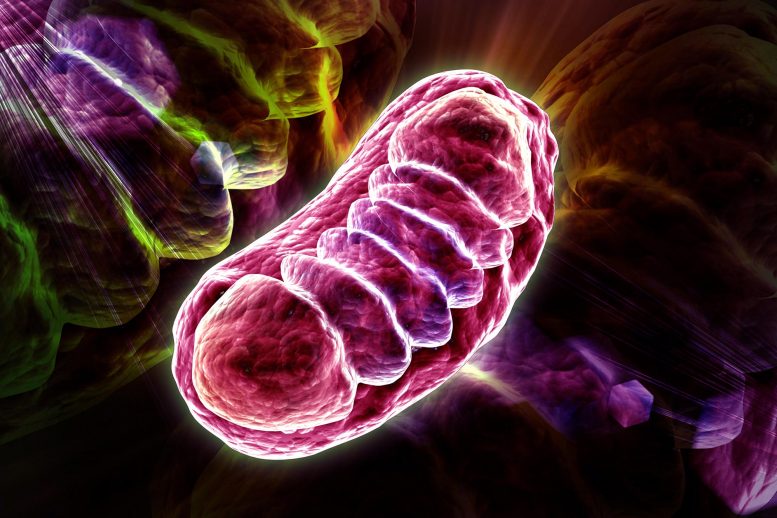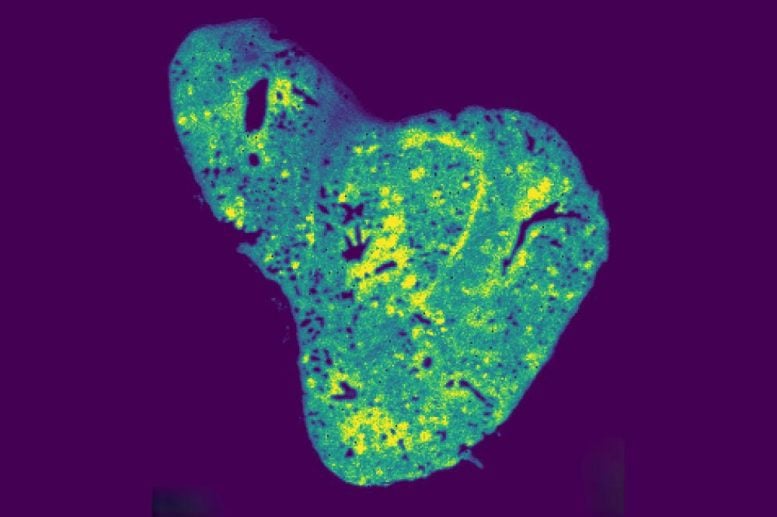
Rockefeller researchers have discovered that the antioxidant glutathione, acting within mitochondria, plays a crucial role in allowing breast tumors to spread to the lung.
Mitochondria are best known as the cell’s powerhouse, but growing evidence indicates they also play a central role in driving cancer. New research has identified the mitochondrial metabolite glutathione as a key factor that enables breast cancer cells to detach from the primary tumor, spread through the body, and establish themselves in new tissues.
The findings are among the first to link a specific mitochondrial metabolite to metastasis, with strong implications for the study of cancer at the cellular level. “We hope that our work will bring more attention to how organelles and their metabolites are relevant to cancer biology,” says Kivanç Birsoy, head of the Laboratory of Metabolic Regulation and Genetics at Rockefeller.
A mysterious connection with metastasis
Most cancer deaths occur not because of the original tumor, but due to the disease’s spread. Because metastasis is the leading cause of cancer mortality, researchers have long sought to uncover the mechanisms that allow cancer cells to break free from their primary site and colonize distant organs.

Previous studies have shown that metabolites such as lactate, pyruvate, glutamine, and serine each contribute to different stages of metastasis. Since mitochondria not only produce cellular energy but also generate metabolites, it is not surprising that recent work has tied mitochondrial activity to the spread of breast, renal, and pancreatic cancers.
Yet the exact molecular players remained unclear. “Mitochondria have thousands of metabolites, and it’s been difficult to determine which are important to tumor formation and growth, and which initiate metastasis,” Birsoy explains.
Cells under stress
To address this question, Birsoy and his colleagues used a protein-tagging approach that allowed them to distinguish between cells that remained in the breast tumor and those that had spread to the lung. Led by graduate fellow Nicole DelGaudio and postdoctoral fellow Hsi-wen Yeh, the team then examined how the metabolite composition of mitochondria changed when cancer cells established themselves in new tissues.
“These techniques allowed us to, in an unbiased manner, see the difference between what’s essential in metastasis and what’s essential in the primary tumor,” DelGaudio says.
Out of thousands of mitochondrial metabolites, glutathione emerged as a striking candidate. This antioxidant, known for reducing oxidative stress, aiding detoxification, and supporting immune function, was found in sharply elevated levels within metastatic cancer cells that had reached the lung. To validate the observation, the researchers employed spatial metabolomics to directly visualize glutathione distribution in lung tissues.
The investigation then shifted toward mitochondrial membrane proteins. Screening revealed that one stood out as indispensable for metastatic cancer cells: SLC25A39, the transporter that imports glutathione into mitochondria. Together, the findings established a direct connection between glutathione and its transporter, showing that mitochondrial glutathione import through SLC25A39 is a critical driver of cancer metastasis.
Birsoy and colleagues also found how mitochondrial glutathione drives cancer spread: not by acting as an antioxidant—an effect ruled out through multiple experiments—but by signaling to activate ATF4, a transcription factor that helps cancer cells survive in low-oxygen conditions. This also pinpointed when glutathione is specifically required: during the early steps of metastatic colonization, when cancer cells adapt rapidly to the stressful environment of a new tissue.
A familiar culprit
This work builds on recent significant work from the Birsoy lab. In 2021, his team was the first to demonstrate that SLC25A39 is the transporter that brings glutathione into the mitochondria; in 2023, they showed that SLC25A39 is not only a transporter but a dynamic sensor that regulates the amount of glutathione in the mitochondria and adjusts those levels accordingly. So when this metabolite and its mitochondrial transporter showed up in cancer screenings, Birsoy knew where to take his experiments next.
“Because we found this transporter earlier and knew how to block the entry of glutathione, we already had the tools necessary to investigate its role in cancer metastasis,” he says.
The findings may have clinical implications—especially since the team also found that breast cancer samples from patients whose disease had spread to the lung showed elevated SLC25A39, and that higher SLC25A39 expression was strongly correlated with poorer overall survival in breast cancer patients. One day, a small molecule that targets this metabolite by blocking its transporter could potentially forestall breast cancer metastasis, with fewer side effects than sweeping therapies that target more general cellular processes.
In the short term, however, the paper emphasizes the importance of nailing down just how metabolites within different compartments operate within our cells.
“We’re trying to make our knowledge of metabolism more precise,” Birsoy says. “It’s not just about some metabolite levels going up and others going down. We need to look at the organelles, the precise compartments, to understand how metabolites influence human health.”
Reference: “Mitochondrial glutathione import enables breast cancer metastasis via integrated stress response signaling” by Hsi-wen Yeh, Nicole Lauren. DelGaudio, Beste Uygur, Alon Millet, Artem Khan, Gokhan Unlu, Michael Xiao, Rebecca C. Timson, Caifan Li, Kerem Ozcan, Karl W. Smith, Luiza Martins. Nascentes Melo, Gabriele Allies, Olca Basturk, Albert Sickmann, Erol C. Bayraktar, Richard Possemato, Alpaslan Tasdogan and Kivanc Birsoy, 31 July 2025, Cancer Discovery.
DOI: 10.1158/2159-8290.CD-24-1556
Never miss a breakthrough: Join the SciTechDaily newsletter.
5 Comments
It’s well understood how cancer metastasis
Is there a product to increase the size of my manhood? I need for it to be thicker
What are the frequency’s used to eliminate the concern?
Wow! If only we knew then what we know today, perhaps my Mom, all four of her sisters, and many of my female first cousins, might have had a chance to survive! I had my own scare last month, but after further testing, I got a reprieve! See you in five months, Docs!!
Seriously, Mr. Cartier?! Chop it off and get a strap on?! Or you could buy a “penis pump” at your local porn/sex toy shop. Why, oh, why, are SO MANY men fixated on the size of their penis’s?! If you’re unhappy with what ya got, blame your genetics!